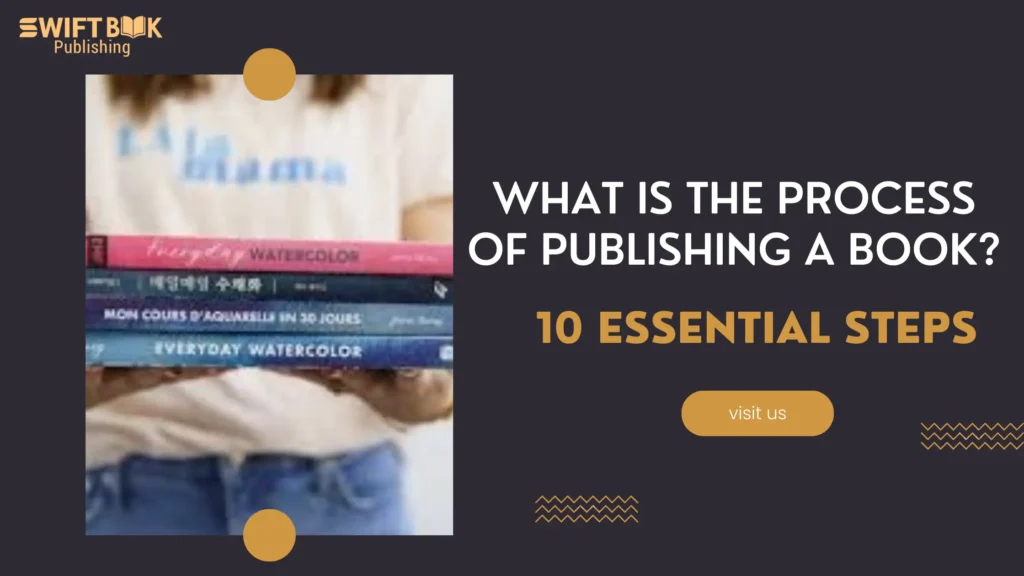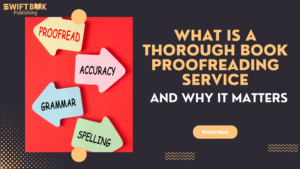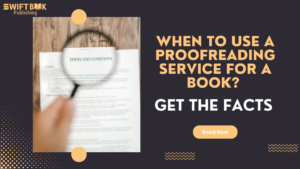Publishing a book is a dream for many writers, but the journey from manuscript to published work can be daunting. As an author with 15 years of experience in the publishing industry, having successfully navigated the complexities of both self-publishing and traditional publishing, I aim to provide you with a comprehensive understanding of the steps involved. Whether you’re a first-time author or a seasoned writer, understanding the process of publishing a book is crucial to achieving your goals.
This guide will walk you through the essential steps to publishing a book, offering insights and practical advice based on firsthand experience. Whether you’re considering self-publishing or traditional publishing, this guide will equip you with the knowledge you need to confidently bring your book to life. Let’s dive into the book publishing process and explore how you can turn your writing dreams into reality.
Process of Publishing a Book: Important Steps
Understanding the process of publishing a book is crucial for both authors and writers, ensuring a smooth journey from manuscript to market. Steps are as follows:
Step 1: Manuscript Preparation
Writing and Editing Your Book
The first and most crucial step in the publishing process is preparing your manuscript. As someone who has gone through this process multiple times, I can attest that writing a book requires dedication, creativity, and discipline. After completing your draft, thorough editing is essential. From my experience, self-editing can refine your structure and narrative, but professional editing is indispensable for ensuring quality.
The Role of Beta Readers and Critique Partners
Before moving forward, I always recommend involving beta readers and critique partners. Over the years, I’ve found that these individuals provide fresh perspectives that are invaluable. Beta readers can simulate your target audience’s reactions, while critique partners, often fellow authors, offer more technical feedback.
Importance of Professional Editing
After incorporating feedback, professional editing is a non-negotiable step. As someone who has worked closely with editors, I know how crucial their role is in polishing a manuscript. Whether it’s developmental editing for structural improvements or copyediting for grammar and syntax, professional editors help elevate your work to a publishable standard.
Step 2: Book Proposal and Querying
Creating a Book Proposal or Query Letter
For non-fiction authors, crafting a compelling book proposal is vital. In my experience, a well-structured proposal that outlines your book’s concept, market need, and your credentials can make all the difference. Fiction writers should focus on a strong query letter, drawing from my own success in landing literary representation through this method.
Researching and Approaching Literary Agents or Publishers
Thorough research is key to finding the right literary agent or publisher. I’ve spent countless hours reviewing agents’ submission guidelines and assessing their suitability for my work, and I can’t emphasize enough how important this step is in the publishing process.
Step 3: Securing a Literary Agent
The Role of a Literary Agent in the Publishing Process
As an author represented by a literary agent, I can confirm that they are invaluable allies in the publishing world. They not only pitch your manuscript to publishers but also negotiate contracts and provide ongoing support throughout the publishing journey.
How to Find and Choose the Right Agent
Finding the right agent can be daunting, but crucial. My advice, based on personal experience, is to research agents who specialize in your genre and have a proven track record. Communication and enthusiasm for your project are equally important when making your choice.
Step 4: Submitting to Publishers
Traditional Publishing vs. Self-Publishing
Choosing between traditional publishing and self-publishing is a significant decision. Having experienced both paths, I understand the pros and cons of each. Traditional publishing offers broader distribution and credibility, but with less creative control. Self-publishing, on the other hand, provides complete autonomy but requires more upfront investment and effort in marketing.
The Submission Process for Traditional Publishing
If you opt for traditional publishing, patience is essential. From my experience, submitting to publishers can take several months, but with a strong literary agent, this process becomes more manageable.
Step 5: Book Design and Formatting
The Importance of Professional Book Design
A professionally designed book is crucial for success. My own books’ success stories reinforce the importance of a captivating cover and well-formatted interior. These elements not only attract readers but also enhance their reading experience.
Interior Formatting
Proper formatting is about more than aesthetics; it’s about readability. From my journey, I’ve learned that a well-formatted book keeps readers engaged, reducing the likelihood of negative reviews.
Step 6: Obtaining an ISBN and Copyright
What is an ISBN and Why It’s Necessary
An ISBN is your book’s fingerprint in the global marketplace. Securing it ensures your book’s availability across various platforms. My experience in navigating this process has shown me the importance of correctly registering your ISBN for optimal distribution.
Steps to Secure Copyright for Your Work
Copyright protection is automatic, but registration adds an extra layer of security. Having registered copyrights for my works, I can confidently say it’s worth the effort to protect your intellectual property.
Step 7: Printing and Distribution
Printing Options: Print-on-Demand vs. Traditional Printing
The choice between print-on-demand and traditional printing depends on your goals. In my case, print-on-demand has been ideal for maintaining low upfront costs and flexibility, especially for self-publishing.
Distribution Channels
Successful distribution is key to your book’s reach. From personal experience, platforms like Swift and Barnes & Noble have been instrumental in getting my books into readers’ hands.
Step 8: Marketing and Promotion
The Significance of a Book Marketing Plan
Marketing can make or break your book’s success. My own marketing plans have included a mix of social media, book tours, and email marketing, all tailored to my target audience.
Effective Marketing Strategies
Having implemented numerous marketing strategies, I can attest to the power of social media, book tours, and giveaways. These methods have significantly boosted my books’ visibility and sales.
The Role of Reviews and Endorsements
Positive reviews and endorsements are critical. I’ve found that engaging with readers and encouraging reviews on platforms like Goodreads and Swift can dramatically impact a book’s success.
Step 9: Launching Your Book
Steps Involved in Launching a Book
A successful book launch requires meticulous planning. My most successful launches have involved pre-launch promotions, social media teasers, and virtual events.
Tips for a Successful Book Launch
From my experience, early promotion and community engagement are key to a strong launch. Organizing events, both virtual and in-person, has helped build excitement and drive sales.
Step 10: Post-Publication Considerations
What Happens After the Book is Published
Post-publication is where the real work begins. Monitoring sales, continuing promotion, and engaging with readers have been vital strategies in maintaining my books’ momentum post-launch.
Assess and Adjust Strategies
Adapting strategies based on feedback and sales data is something I’ve done with each of my books, allowing me to continually improve and sustain my writing career.
Conclusion
Publishing a book is a complex journey that involves much more than just writing. With years of experience in both self-publishing and traditional publishing, I can confidently say that each step plays a vital role in your book’s success. By understanding the process and making informed decisions, you can navigate this journey with confidence and bring your writing dreams to reality.
Frequently Asked Questions
- What are the essential steps in the book publishing process?
The essential steps include preparing your manuscript, choosing a publishing path, obtaining an ISBN, securing copyright, printing, distribution, marketing, launching your book, and post-publication activities. - How long does the process of publishing a book usually take?
The timeline can vary widely depending on the publishing route, the complexity of the book, and how much time is dedicated to each step. It can take anywhere from several months to a couple of years. - Is it better to self-publish or go through a traditional publisher?
It depends on your goals, resources, and the type of book you’re publishing. Self-publishing offers more control and higher royalties, while traditional publishing can provide broader distribution and professional support. - What is the cost involved in publishing a book?
Costs can vary depending on whether you’re self-publishing or using a traditional publisher. Self-publishing can include expenses for editing, cover design, formatting, printing, and marketing, while traditional publishing often covers these costs but pays lower royalties. - How can I market my book effectively after publication?
Effective post-publication marketing includes ongoing engagement with readers, seasonal promotions, exploring new marketing channels, cross-promotion with other authors, and maintaining an active presence on social media.







